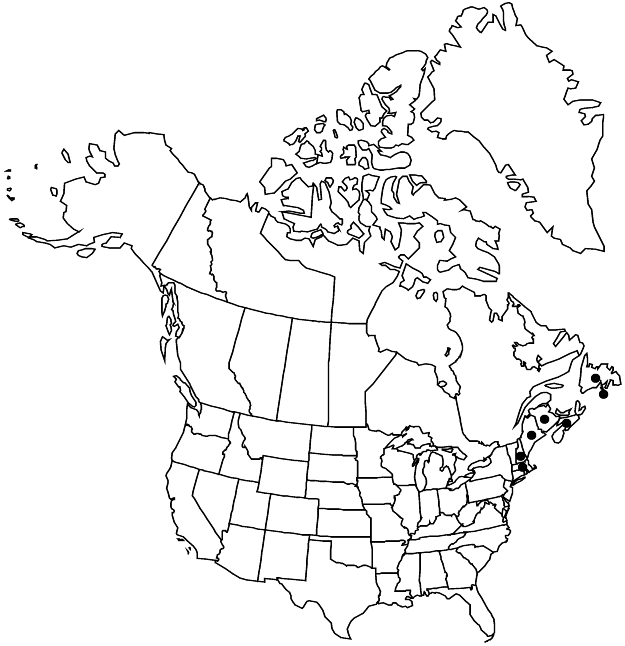Difference between revisions of "Sagina nodosa subsp. nodosa"
FNA>Volume Importer |
FNA>Volume Importer |
||
| Line 1: | Line 1: | ||
{{Treatment/ID | {{Treatment/ID | ||
|accepted_name=Sagina nodosa subsp. nodosa | |accepted_name=Sagina nodosa subsp. nodosa | ||
| − | |accepted_authority= | + | |accepted_authority= |
|publications= | |publications= | ||
|common_names=Sagine noueuse | |common_names=Sagine noueuse | ||
| Line 8: | Line 8: | ||
|name=Sagina nodosa var. pubescens | |name=Sagina nodosa var. pubescens | ||
|authority=(Besser) Koch | |authority=(Besser) Koch | ||
| + | |rank=variety | ||
}} | }} | ||
|hierarchy=Caryophyllaceae;Caryophyllaceae subfam. Alsinoideae;Sagina;Sagina nodosa;Sagina nodosa subsp. nodosa | |hierarchy=Caryophyllaceae;Caryophyllaceae subfam. Alsinoideae;Sagina;Sagina nodosa;Sagina nodosa subsp. nodosa | ||
| Line 24: | Line 25: | ||
|distribution=St. Pierre and Miquelon;N.B.;Nfld. and Labr. (Nfld.);N.S.;Maine;Mass.;N.H.;Europe. | |distribution=St. Pierre and Miquelon;N.B.;Nfld. and Labr. (Nfld.);N.S.;Maine;Mass.;N.H.;Europe. | ||
|discussion=<p>Subspecies nodosa is probably introduced in North America. Its localities tend to be correlated with coastal regions that had an early history of fishing by Europeans; it may have been introduced with the dumping of ballast. It was collected at least once from New Hampshire where it apparently has been extirpated.</p><!-- | |discussion=<p>Subspecies nodosa is probably introduced in North America. Its localities tend to be correlated with coastal regions that had an early history of fishing by Europeans; it may have been introduced with the dumping of ballast. It was collected at least once from New Hampshire where it apparently has been extirpated.</p><!-- | ||
| − | --><p>Some variation occurs in the amount and distribution of pubescence on the leaf surface in < | + | --><p>Some variation occurs in the amount and distribution of pubescence on the leaf surface in <i></i>subsp.<i> nodosa</i>. In plants with a lesser amount of pubescence, the glandular hairs are restricted chiefly to the leaf margins; the leaves may even be glabrous. This seems to be the case primarily when <i></i>subsp.<i> nodosa</i> and the native <i></i>subsp.<i> borealis</i> occur in the same vicinity, such as some populations along the Saint Lawrence Seaway, Grand Manan Islands, New Brunswick, and Machaias, Maine. More typically, the plants are pubescent and the trichomes are more frequent along the veins on the abaxial surface as well as the leaf margins.</p> |
|tables= | |tables= | ||
|references= | |references= | ||
| Line 33: | Line 34: | ||
-->{{#Taxon: | -->{{#Taxon: | ||
name=Sagina nodosa subsp. nodosa | name=Sagina nodosa subsp. nodosa | ||
| − | + | |authority= | |
| − | |authority= | ||
|rank=subspecies | |rank=subspecies | ||
|parent rank=species | |parent rank=species | ||
| Line 49: | Line 49: | ||
|publication year= | |publication year= | ||
|special status= | |special status= | ||
| − | |source xml=https://jpend@bitbucket.org/aafc-mbb/fna-data-curation.git/src/ | + | |source xml=https://jpend@bitbucket.org/aafc-mbb/fna-data-curation.git/src/f50eec43f223ca0e34566be0b046453a0960e173/coarse_grained_fna_xml/V5/V5_289.xml |
|subfamily=Caryophyllaceae subfam. Alsinoideae | |subfamily=Caryophyllaceae subfam. Alsinoideae | ||
|genus=Sagina | |genus=Sagina | ||
Revision as of 21:52, 16 December 2019
Stems glandular-pubescent. Basal leaf blades glandular-pubescent, especially on margins and midrib, or glabrous. Pedicels glandular-pubescent distally. Flowers: calyx base glandular-pubescent. 2n = 56.
Phenology: Flowering mid-late summer.
Habitat: Coastal, moist crevices of rocks along seashore and on sea cliffs, wet sand flats at river mouths
Elevation: 0-300 m
Distribution

St. Pierre and Miquelon, N.B., Nfld. and Labr. (Nfld.), N.S., Maine, Mass., N.H., Europe.
Discussion
Subspecies nodosa is probably introduced in North America. Its localities tend to be correlated with coastal regions that had an early history of fishing by Europeans; it may have been introduced with the dumping of ballast. It was collected at least once from New Hampshire where it apparently has been extirpated.
Some variation occurs in the amount and distribution of pubescence on the leaf surface in subsp. nodosa. In plants with a lesser amount of pubescence, the glandular hairs are restricted chiefly to the leaf margins; the leaves may even be glabrous. This seems to be the case primarily when subsp. nodosa and the native subsp. borealis occur in the same vicinity, such as some populations along the Saint Lawrence Seaway, Grand Manan Islands, New Brunswick, and Machaias, Maine. More typically, the plants are pubescent and the trichomes are more frequent along the veins on the abaxial surface as well as the leaf margins.
Selected References
None.